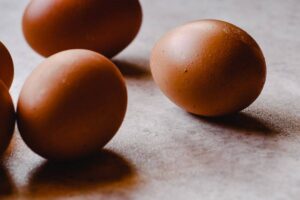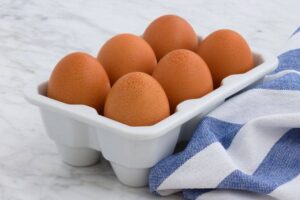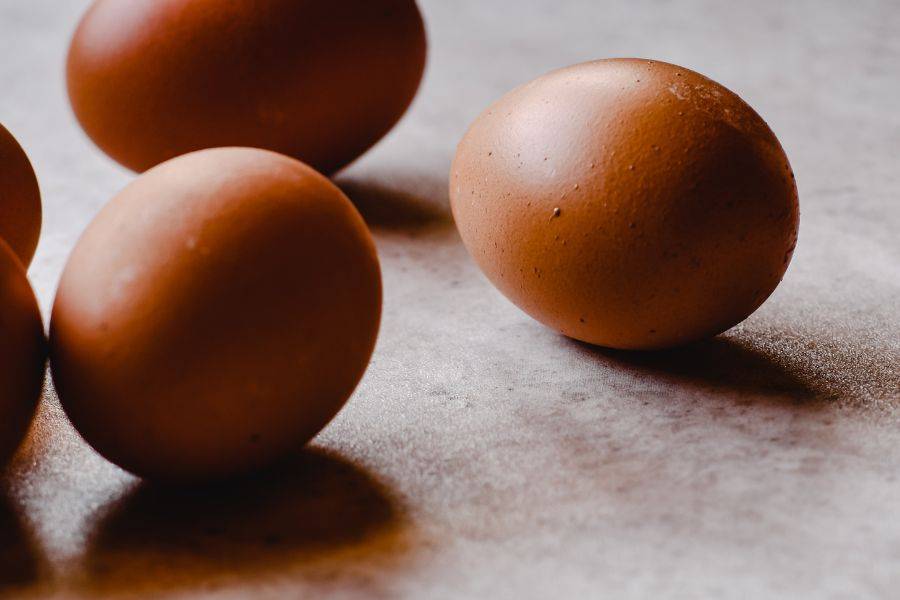Table of Contents
The breed of hens, as well as their genetic makeup, can both affect the color of the eggs’ shells.
No matter what color the shell is, the egg within will be the same. The Welsummer and the Maran are two examples of well-known hen species that lay colored eggs.
The nutritious content of an egg laid by a hen confined her entire life will be significantly reduced.

In contrast, the eggs laid by hens that were free-range and bred on organic fields will have a high nutritional value.
Some differences and similarities between the Welsummer and Maran eggs are highlighted below.
Welsummer Eggs vs Maran Eggs: The Origin(The Maran)
The Maran egg comes from a chicken breed discovered in the town of Marans.
Marans is located in the Charente-Maritime district of the Nouvelle-Aquitaine area of the southwestern region of France.
It is important to note that the Marans breed of hen is kept as a breed specifically for the egg it lays.
Even if the flesh of the breed can be consumed, the value that the egg gives to the breed cannot be disputed. That makes it a notable breed among its peers.
The Origin(The Welsummer)
The Welsummer egg is said to originate from the renowned Welsummer fowl.
It is a town in the Netherlands called Welsum that is credited with the origin of this breed.
Even though this breed has only been around for a very short time, it is rapidly gaining popularity among poultry enthusiasts worldwide.
Welsummer birds remain the most common species kept as pets in the backyards of people in the United Kingdom and Australia.
They are so popular as pets that even the Prince of England keeps one in his backyard.
Although Welsummers were bred specifically to serve egg and meat markets, their size is smaller than that of other poultry breeds.
Because of this, most people place a higher value on the Welsummer egg than they would on the meat.
Welsummer Eggs vs Maran Eggs: color of the Eggs
The color of the two eggs is one of the things that give respect to the breeds among other hens.
Although the breeds do not have a specific color.
Yet, most of the eggs can be tagged to some of the colors discussed below.
The color of the Maran Breed
Every egg starts out with a white shell.
The color comes from a pigment that is introduced at various points throughout the process of making eggs.
Based on the area at which the pigment is introduced, the color may penetrate through the shell or remain only on the surface.
Eggs laid by the Maran breed start off extremely dark, lighten up slightly throughout the season, and then have the potential to turn darker once the hen has moulted each year.
The brown pigment is exclusively seen on the exterior of the egg and is deposited just before the act of laying the egg.
The interior of the shell is completely white.
Because of the darkness of the color, these eggs are among the most challenging to candle as they are being incubated.
Generally, Maran lays Chocolate-brown eggs.
The color of the Welsummer Breed
The color of a Welsummer egg is somehow different from that of the Maran breed.
It is almost generally described as terracotta and is always a deep, rich reddish-brown.

They may be spotted and are darkest at the beginning of the hen’s laying career, becoming progressively paler as the hen ages.
Welsummer Eggs vs Maran Eggs: Most Eggs Laid
A significant number of people are undecided about the best way to maximize the number of eggs produced by their hens.
Before passing judgment on breeds, you ought to give some thought to the points discussed below.
Both Welsummers and Marans Hens are renowned for their capacity to lay a large number of eggs.
Investing in the breeds is a good idea if you want to increase the number of eggs you produce.
There have been reports of Welsummers laying as few as 160 eggs annually, although other species are capable of producing up to 250.
It is not unusual for them to lay fewer eggs during the winter months.
This is especially true with breeds that were not developed specifically for the purpose of producing eggs.
Depending on the variety, Maran hens can produce anywhere from 150 to 200 eggs of a dark brown color annually.
Marans have traditionally been valued not only for the rich color of their eggs but also for the high quality of the eggs they produce for consumption.
Welsummer Eggs vs Maran Eggs: Size of the Eggs
Eggs are essential in an extremely wide range of recipes, both savoury and sweet.
Eggs can be used to thicken and emulsify sauces like hollandaise to give moisture to baked products.
On the other hand, not every egg is the same.
When following a recipe that calls for eggs, it is essential to take into account the size and weight of the eggs in order to get the most accurate results.
The size of the eggs laid by Welsummer and Maran’s birds can vary greatly depending on their nutrition as well as their living conditions.
Large quantities of nutrient-dense feed that is high in calcium can help contribute to the production of eggs that are bigger and of higher quality.
Egg size will definitely decrease if conditions such as overcrowding, heat stress, or an inadequate water supply are present.
There is a possibility that the two hens’ eggs could weigh up to a jumbo total of 2 to 3 oz.
The average size of a Welsummer egg is usually bigger than that of a Maran egg by a decent margin.
Welsummer Eggs vs Maran Eggs: Home Flock
The two breeds share many characteristics, with the exception of the color of their eggs and a few other minor distinctions.
The advantage of being raised in a home environment is one of them.
If you are interested in learning how to get the Welsummer or Maran birds to lay the most eggs possible, you may want to inquire about the caging technique.
There are commercial breeds of chickens that were created solely for the purpose of increasing egg output.
Although the commercial White Leghorn is commonly used in large-scale egg production facilities, backyard flocks of these birds typically do not have successful production rates.
They are simply incapable of staying put.
In addition, the eggs they lay have pale shells. Brown-shelled eggs are typically the most popular choice for consumers who buy eggs from farmers with small flocks.
Though there is no difference in the eggs’ nutritive value between those with a brown shell and a white shell.
Both Welsummer and Maran birds are among the easiest types of hens to raise successfully at home.
In contrast to other breeds, they do not require significant commercial packaging to significantly increase their egg production.
Conclusion
In light of what has been discussed thus far, it would be worthwhile to raise either of these breeds.
Taking into account people’s passion for eggs as well as the inherent nutritional worth of eggs, these breeds are beneficial.
When it comes to establishing a flock in your backyard, we recommend that you give serious consideration to either of the breeds.
The magnificent and substantial eggs are something to be commended for.









